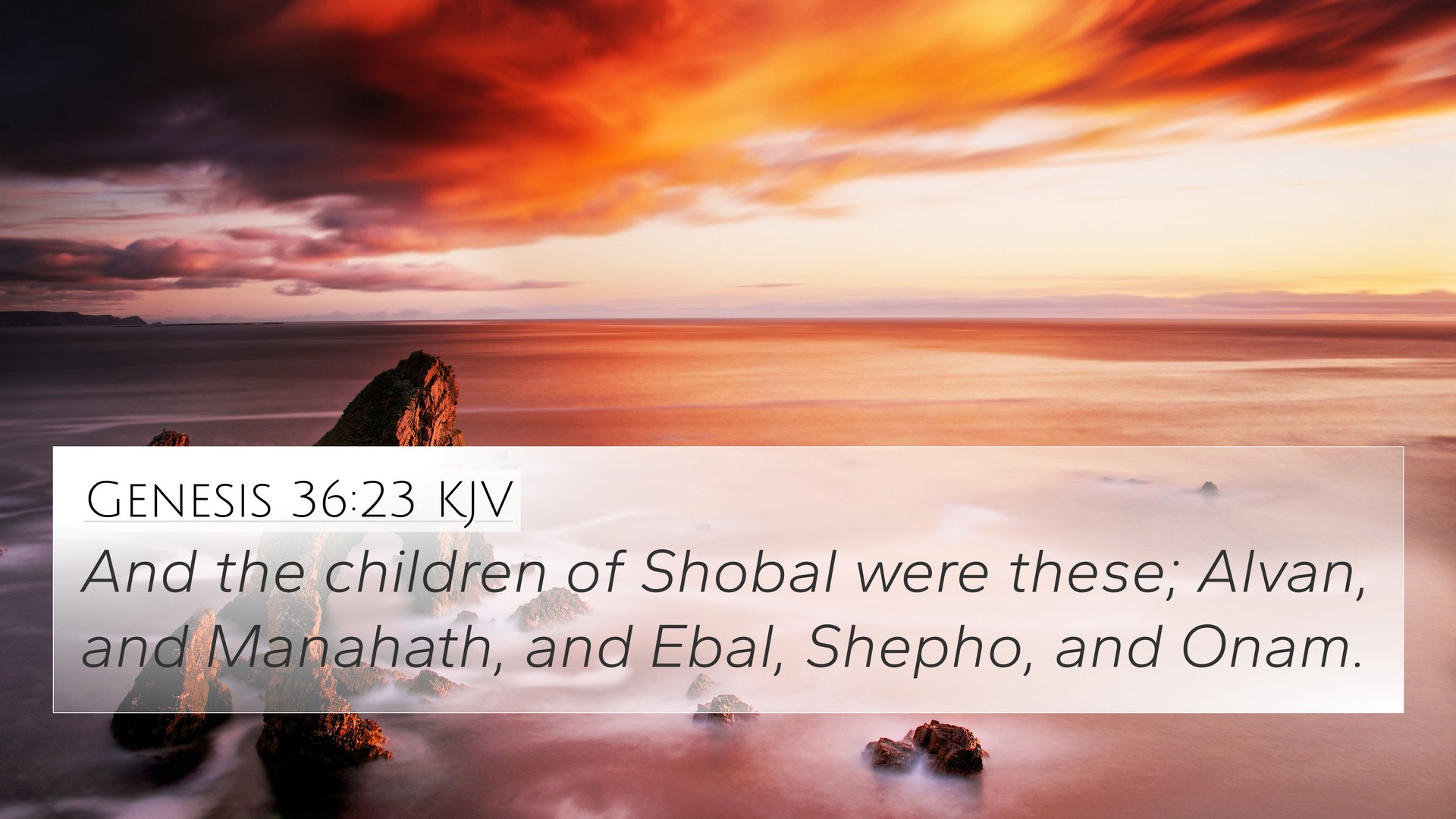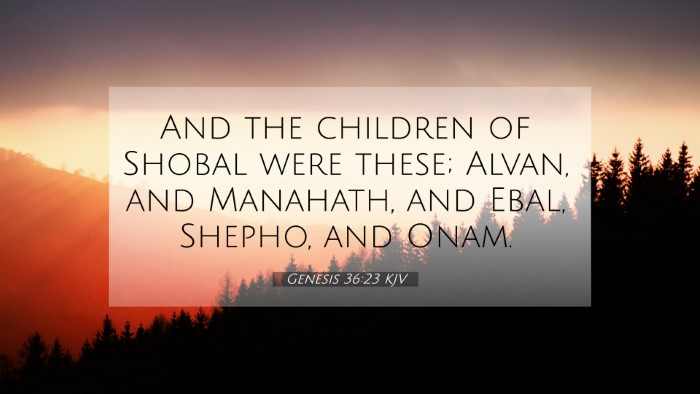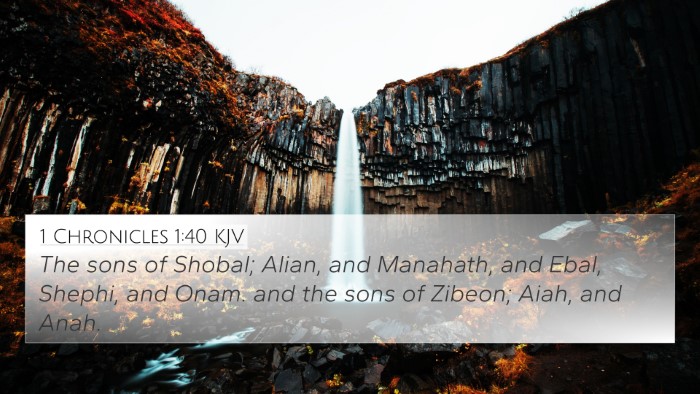Understanding Genesis 36:23
Genesis 36:23 states: "And the children of Dishan are these; Uz, and Aran." This passage gives a brief genealogical record focused on the descendants of Esau, highlighting the connections within the familial structure of Edom.
Context and Significance
This verse forms part of a larger narrative that traces the lineage of Esau, who is also known as Edom. Understanding this passage requires looking at the relationships between the characters mentioned and the historical context of the Edomite people.
Commentary Insights
- Matthew Henry: Henry emphasizes that genealogies in the Bible often serve to establish historical legitimacy and fulfill God's promises concerning nations and peoples. In Genesis 36, the focus on the children of Dishan reveals Esau's significant role in the formation of Edom.
- Albert Barnes: Barnes points out the value of these genealogical listings in understanding territorial claims and social structures. The mention of Uz and Aran as descendants of Dishan may indicate clans or family groups within Edom and their respective importance.
- Adam Clarke: Clarke affirms that these familial connections serve a dual purpose: documenting lineage and illustrating God's providence in the growth of nations, which ties into broader biblical themes of inheritance and covenant.
Thematic Connections
This verse can be linked thematically to other parts of Scripture that address family, lineage, and the fulfillment of God's promises. Here are several significant connections:
- Genesis 25:24-26: Birth of Esau and Jacob, indicating the beginning of this family tree.
- Genesis 36:1: The establishment of Esau as the father of the Edomites, which provides context for the mention of his descendants.
- Romans 9:10-13: A New Testament reflection on Jacob and Esau, showing God's choice in lineage and the implications for the covenant.
- Obadiah 1:10-12: A prophetic reflection on Edom's legacy and their conflicts with Israel, creating a narrative arc for understanding Edom's descendants mentioned here.
- 1 Chronicles 1:35-36: A confirmatory genealogy that parallels and further elucidates the lineage of Esau, and mentions similar names.
- Hebrews 12:16: Discusses Esau as a profane person, bringing further moral and spiritual lessons regarding his descendants.
- Matthew 1:2-3: The genealogy of Jesus Christ ties back into these family connections, weaving Esau’s lineage within the broader redemptive story.
- Jeremiah 49:7-10: Prophecy concerning Edom offers insight into the consequences of their historical actions and connections.
Cross-Referencing Insights
Utilizing tools for cross-referencing can uncover layers of meaning in the Bible. Genesis 36:23 is a prime example of how details in genealogies relate to larger narratives:
- Tools for Bible Cross-Referencing: Utilize concordances to find related verses.
- Bible Concordance: Look up terms like "Edom," "Esau," "Dishan" for deeper understanding.
- Bible Cross-Reference Guide: Can provide insights into thematic parallels and relations.
Practical Application
When studying genealogies, one may wonder: Why does this matter to me today? Contextualizing this material leads to the understanding that God's intricate plans unfold through generations. Reflecting on family ties can inform our own understanding of heritage, identity, and divine purpose.
Conclusion
Genesis 36:23 offers a glimpse into the historical and social constructs of ancient Israel and Edom. Understanding its significance through cross-referencing and genealogical studies enriches our grasp of Scripture, illustrating God's meticulous orchestration of human history through families and nations.
Further Exploration
For those seeking to deepen their Bible study:
- How to Find Cross-References in the Bible: Engage with resources that enhance your study of genealogies and connections.
- Identifying Connections Between Old and New Testament: Discover the overarching narratives that link different books of the Bible.
- Cross-Referenced Themes in the Bible: Explore how themes of inheritance, blessing, and family dynamics are interwoven.



